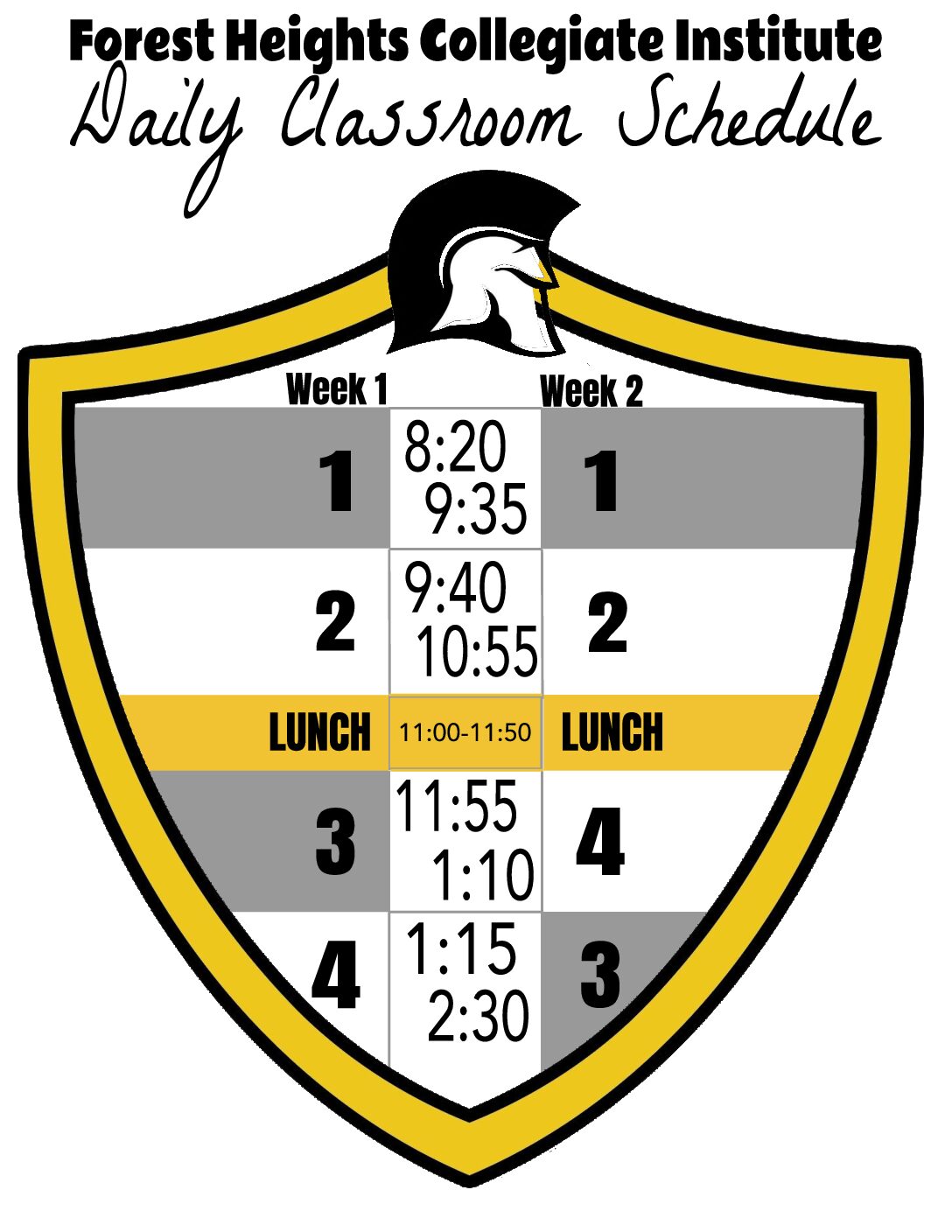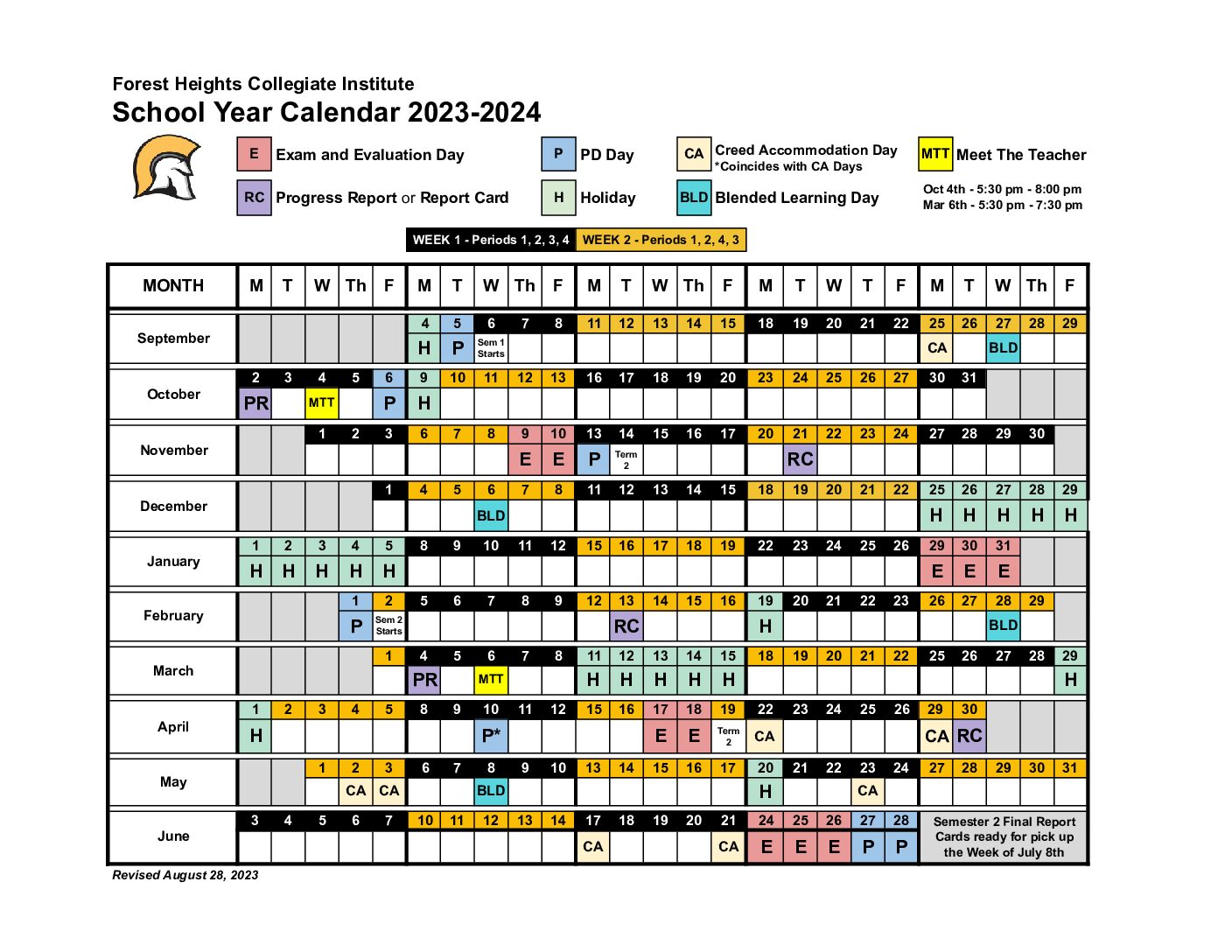Terms and Definitions
Community Service Hours
Every student must complete a minimum of 40 hours of community involvement activities as one of the requirements for an Ontario Secondary School Diploma (OSSD) for the purpose of developing an awareness and understanding of civic responsibility.
Community Involvement Requirements
Course Code
This 6-character code describes the subject, grade level and pathway destination of a high school course.
Decoding the Course Code
The first five characters of the course code indicate the subject, grade level, and course type. They are based on the Common Course Codes used in all secondary schools in Ontario.
| Subject | Grade | Course Type | FHCI Indicator |
|---|---|---|---|
| ENG | 2 | D | I |
| The first three characters of the course code (ENG in this example) refers to the name of the course. ENG2DI is English. | The fourth character (2 in this example) refers to the grade of the course. 1 = Grade 9 2 = Grade 10 3 = Grade 11 4 = Grade 12 ENG2DI is a Grade 10 course. |
The fifth character (D in this example) refers to the type of course. P = applied D = academic O = open E = workplace preparation C = college preparation M = university / college preparation U = university preparation ENG2DI is an academic course. |
The sixth character (I in this example) is for use by FHCI only). |
Course Types
- Compulsory Course – any obligatory course taken to fulfill core-education and program-specific requirements.
- Optional Course – any course which is not mandatory. Usually left to individual student’s choice or interest.
- Academic Course – develops students’ knowledge and skills through the study of theory and abstract problems.
- Applied Course – develops students’ knowledge and skills through practical applications and more hands-on applications of the concepts.
- Open Course – designed for further study in a subject, and to enrich students’ education generally.
- University Preparation Course – needed to meet the entrance requirements for university programs.
- College Preparation Course – taken to meet the requirements for entrance to most college programs or for admission to apprenticeship programs.
- University/College Preparation Course – courses needed to meet the entrance requirements for specific programs offered at universities and colleges.
- Workplace Preparation Course – taken to meet the expectations of employers if student plans to enter the workplace directly after graduation.
- Open Courses – designed to broaden students’ knowledge and skills in subjects that reflect their interests.
Prerequisite Course
Prerequisites are specified for courses offered in Grades 11 and 12. They are identified in the Course Calendar.
Credit
A credit value of 1.0 is granted upon successful completion of a 110-hour course with a minimum achievement of 50%.
34 Credit Cap
Thirty credits are required to graduate; however, students who want to take more than 34 credits may only do so at the discretion of the principal.
Exam/Summative Evaluation
Students may write an exam or complete a summative, which tests their knowledge on the entire course work, at or near the end of a semester.
OSSD
The Ontario Secondary School Diploma is granted after fulfilling all necessary credit, literacy and community hour requirements.
Secondary School Literacy Graduation Requirement
All students must successfully complete the Ontario Secondary School Literacy Test (OSSLT) (taken in Grade 10) in order to earn a secondary school diploma. Students who write the OSSLT but do not succeed must retake the test or may have the option to enrol in the Literacy Course (OLC4OI).
Semester
The school year is divided into two semesters (September to January, February to June). A student will take 4 courses per semester.
Student Success
Forest Heights has staff and programming in place to support and improve learning.
Timetable
A timetable outlines the course, time, room, lunch period, teacher and semester in which students will take all of their courses.
Tags: courses


